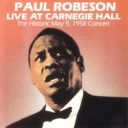Folk Spiritual
Sweet Honey in the Rock
© Stephanie BergerKey Attributes of Folk Spiritual
Select to filter timelineThemes
- Cultural Influences
- Daily Life
- Freedom
- Political Issues/Activism
- Religion/Faith
- Social Consciousness
- Slavery
- Community
Musical Features
- Hymns
- Body Percussion
- Call and Response
- Repetition
- Vocals
- Improvisation
- Melody
- Phrasing
Instruments
- Voice
One of the most exhilarating, expressive and inspiring forms of African American music—beloved by people of all religious persuasions despite its exclusive lyrical adherence to the tenets of Christian belief and storytelling—is gospel, whose predecessor is the spiritual. The earliest form of African American religious music, the spiritual, also called Negro spiritual, comprises two forms—folk and concert. The folk spiritual is a form of improvised music, spontaneously created by individuals and groups. The concert spiritual, also known as arranged spirituals, evolved in schools created to educate the enslaved after emancipation. The spiritual draws from African music and European psalms and hymns, and from African-derived secular sources, including work songs, field calls and protest songs. It was sung in both religious and secular settings, including as the enslaved worked the plantation fields.
Context and History
As Africans in America, the enslaved maintained their African way of life, including religious practices. Their religious rituals evolved around singing, dancing and other forms of bodily movement, which the European clergy criticized, describing them as “primitive,” “vulgar,” “pagan,” and contrary to the teachings of Christianity. To discourage and replace these “sinful” dances and “secular” musical events with sanctioned European religious activities in northern colonies, missionaries organized various proselytizing campaigns beginning in the 18th century. Despite the conversion of some enslaved and free Blacks, the clergy’s initial effort largely was unsuccessful. The Great Revival Movement mounted a century later in the South, however, led to the conversion of the enslaved masses, who were attracted to the emotional aspect of the camp meetings associated with this movement. As Christians, the majority of enslaved and free Blacks did not relinquish their African religious beliefs nor cultural traditions. They resisted European cultural conformity by transforming Christian worship services into an African-styled ritual, evolving the Protestant repertoire into an African American tradition, and reinterpreting Biblical teaching through an African world view and their experiences as slaves.
“In the Blacks’ quarter [of camp meetings], the coloured people get together, and sing for hours together, short scraps of disjointed affirmations, pledges, lengthened out with repetition [sic] choruses.”John F. WatsonMethodist Minister
The spiritual began emerging in conjunction with camp meetings associated with the Second Awakening. This revival movement dominated religious life in the American frontier from the 1780s to the 1830s, attracting both Blacks (free and enslaved) and illiterate whites. Both groups revolted against the “dull” traditional hymns, favoring a livelier form of religious music created during the revival. At the end of daily meetings in their segregated tents, Blacks, according to a Methodist minister and other white observers, “continued the whole night, singing tune after tune,…scarce one which were in our hymn books.” He condemned this practice, noting it has “already visibly affected the religious manners of some whites.”
“When Baptist Negroes attended the church of their masters . . .they used hymn books, but in their own meetings they often made up their own words and tunes. They said their songs had more religion than those in the books.”Ella Storrs
“During the singing of this hymn, the excitement, which had been gradually increasing with each change in the exercises, reached its height. Men stamped, groaned, shouted, [and] clapped their hands; women shrieked and sobbed. . .wilder grew the excitement, louder the shrieks.”Elizabeth KilhamTeacher in the South in the 1860s
The conversion of the enslaved masses to Christianity in the early 19th century facilitated the development of the Negro spiritual as a distinct form of American religious music. Worshiping independently of whites in worship services led by Black preachers, the enslaved and freed Blacks spontaneously created songs using the African call-response and repetitive chorus structures. They also reinterpreted the European psalms and hymns in ways that had meaning to them as Africans in America. They, for example, improvised on the melodies, changed the rhythms, sped up the tempo, added repeated refrains and choruses, and replaced texts with new ones that often combined English and African words and phrases. The final product was an improvised African-styled song. A white observer of this change, commented that the white hymn composers “Watts and Newton would never recognize their productions through the transformations they have undergone at the hands of their colored admirers.”
Unlike much of European religious music, the folk spirituals often were spirited, and they accompanied religious dancing (later known as “the shout”). These early folk spirituals melded the Christian belief system with native African culture and from it created something uniquely African American, and by extension, American. Initially passed down orally, spirituals of the enslaved have been central in the lives of African Americans for over three centuries, serving religious, cultural, social, political, and historical functions. By engaging in the singing of spirituals, the participant experienced a form of freedom. The folk spiritual later evolved into Concert Spirituals, Rural Gospel, Spiritual as Art Song, and Freedom Songs.
Musical Features/Performance Style
Folk spirituals are spontaneously created and performed in a repetitive, improvised style. The most common song structures are the call-and-response (“Blow, Gabriel”) and repetitive choruses (“He Rose from the Dead”). The call-and-response is an alternating exchange between the soloist and the other singers. The soloist improvises a line to which the other singers respond, usually by repeating the same phrase. Group singing is performed with slight deviations from the melody line, rather than in unison or harmony. Song interpretation incorporates the interjections of moans, cries, hollers, etc., and changing vocal timbres. Singing is accompanied by handclapping and foot-stomping.
Lyrics
The texts of folk spirituals drew from various sources, which the enslaved interpreted though the lens of their daily experience. Mixing native African words and African American dialect, songs might touch on biblical themes, the daily experiences of the enslaved, the desire for freedom and deliverance, protest, suffering and other topics. Biblical stories from the Old Testament and the book of Revelations from the New Testament, for example, provide thematic material for the majority of folk spirituals. In their songs, the enslaved recreated stories about the oppressed Hebrew people, the cruel Egyptians, the Red Sea, and the land of Canaan to reflect their oppression, their treatment by whites, and their desire for freedom respectively. The stories about Daniel, Jacob, Moses, Gabriel, Jesus, Jonah, Paul and Silas, Mary and Martha, among others gave the enslaved courage, strength, and determination to endure worldly hardship with the promise of a better life in Heaven. Examples include:
Didn’t My Lord Deliver Daniel?
Didn’t my Lord deliver Daniel, deliver Daniel, deliver Daniel?
Didn’t my Lord deliver Daniel, and why not every man?
He delivered Daniel from the lion’s den, Jonah from the belly of the whale,
And the Hebrew children from the fiery furnace, and why not every man?
Go Down Moses
When Israel was in Egypt’s land, let my people go.
Oppressed so hard they could not stand, let my people go.
Go down Moses, way down in Egypt land,
Tell ole Pharaoh, let my people go!
Folk spirituals also provided a forum for slaves to protest their bondage and criticize their masters: Before I’d be a slave, I’ll be buried in my grave, and go home to my Lord and be free. Some of the songs, such as “Steal Away,” “Deep River,” and “Go Down Moses,” used a double entendre to reference the desire for freedom. The coded text disguised the details for plans that assisted slaves in securing that freedom.
Steal Away
Steal away, steal away, steal away to Jesus!
Steal away, steal away home, I ain’t got long to stay here!
My Lord calls me, He calls me by the thunder;
The trumpet sounds within a my soul, I ain’t got long to stay here.
The first line of text alerted slaves to the presence of the person who would lead them to freedom. The remaining texts warned that the journey would begin immediately upon receiving a signal that the path was clear. These and other texts were incomprehensible to whites who interpreted them as “unintelligible” and “meaningless.” For slaves, they held much meaning—a possible “ticket” to freedom. Therefore, coded songs provide further evidence that slaves resisted the control which the clergy and other whites sought to exercise over their lives.
Bibliography
- Burnim, Mellonee V. “Spirituals” in Mellonee V. Burnim and Portia K. Maultsby, eds. African American Music: An Introduction. 2nd ed. (New York: Routledge Press, 2015), 50-71.
- Jackson, Bruce. The Negro and His Folklore in Nineteenth Century Periodicals. Austin: American Folklore Society/University of Texas Press, 1967
- Levine, Lawrence. Black Culture and Black Consciousness. New York: Oxford Press, 1977.
- Southern, Eileen. The Music of Black Americans: A History. 3rd edition. New York: W.W. Norton, 1983.
- Southern, Eileen. Readings in Black American Music. 2nd ed. New York: W.W. Norton, 1983









